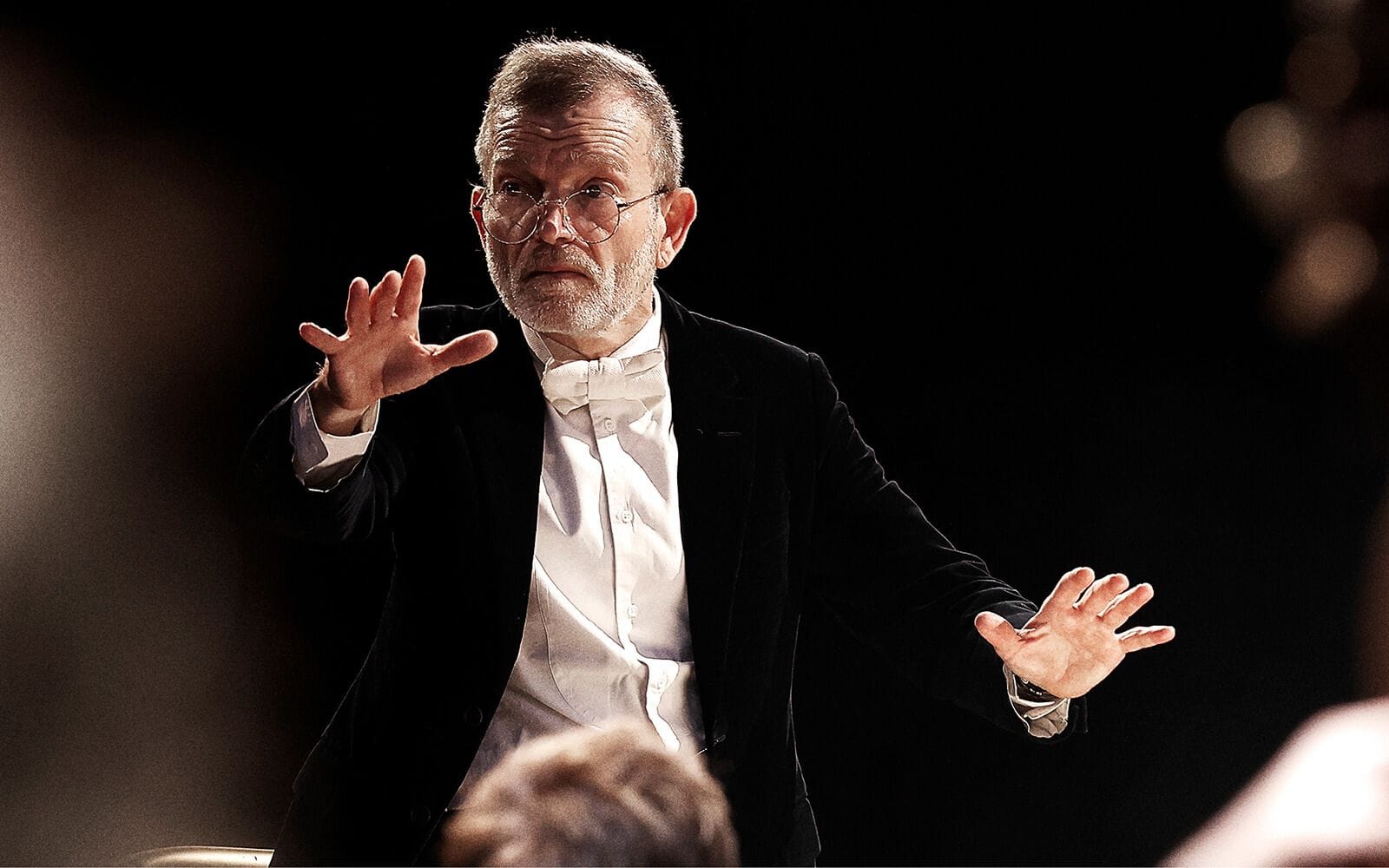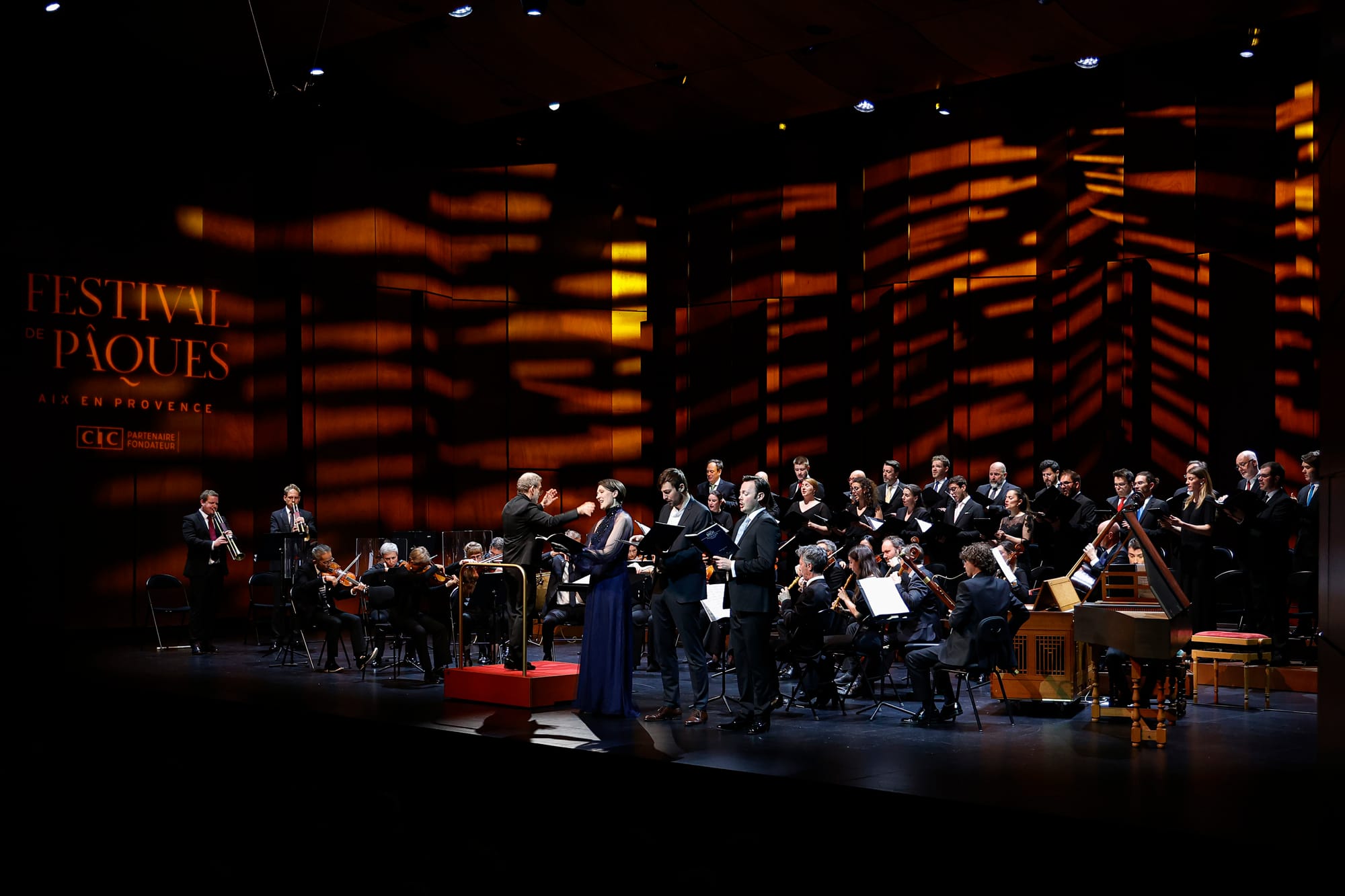Bach @ Aix: Christophe Rousset & Les Talens Lyriques
There was much to admire here

Aix en Provence Easter Festival: Bach Anna El-Khashem (soprano); Mari Askvik (alto)l Nick Pritchard (tenor); Adrien Fournaison (bass); Namur Chamber Choir; Les Talens Lyriques / Christophe Rousset (conductor). Grand Théâtre de Provence, Aix en Provence, France, 20.04.2025
Bach Cantatas: Erfreut euch, ihr Herzen, BWV 66; Ein Herz, das seinen Jesum lebend weiß, BWV 124. Osterorrorium (Easter Oratorio), BWV 249.
Christophe Rousset and his crack ensemble Les Talens Lyriques enjoy a deserved reputation in music of the likes of Lully and Salieri. Despite a recent album on Aparté of Bach Arias for Alto (with Zoltan Darago), there is perhaps less of Rousset's non-keyboard Bach out there. In April 2023, though, Rousset conducted an unforgettable St Mathew Passion at Aix (review); now it was the turn of the lesser-known (and much shorter) Easter Oratorio (Osteroratorium).
There was one substitution to the adveisd line-up: bass Edwin Crossley-Mercer was indisposed ad replaced by Adrien Fournaison.
The performance of BWV 66 is quite fitting. It is a parody cantata, taking its material from BWV 66a; it was composed for the year 1724, the year of the St John Passion (which performance took place on Good Friday, and indeed in London, at the Barbican, the Academy of Ancient Music performed the work, and you can read my review here). BWV 66 was performed on Easter Monday, taking its material from the birthday cantata, Der Himmel dacht auf Anhalts Ruhm und Glück. The premiere took place on April 10, 1724.
BWV 66 opens with the long bright, trumpet-drenched chorus of the title (which translates as ‘Rejoice, you hearts’).: some fabulous, clarion trumpet playing here from Russell Gilmour The performance by Les Talens Lyriques was markedly busy and exciting, complemented by the firm bass of Adrien Fournaison. It would be impossible to tell he was a last-minute stand in if an announcement had not been made; there was terrific confidence to his account of the aria, ‘Lasset die Höchsten ein Danklied erschllen’ (Let a song of thanks ring out to the Almighty). Fournaison’s singing was notable for its accuracy (this is quite an active aria). Tenor Nick Pritchard was simply superb in his initiation of the duet-recitative, ‘Bei Jesu Leben freudig sein’ (With Jesus life is joyous), his voice pure, his words exact; that beauty was prolonged in the duet, ‘Ich furchte zwar/nicht ses Grabes Finsternissen’ (Fear indeed [not] the darkness of the grave), which found Mari Askvik every inch Pritchard’s equal, and included a stunning violin obbligato from Gilone Gaubert. The final chorale (Alleluia) was perfectly judged (memories of that Friday London St John Passion, where chorales were given little or no space to breathe, were thankfully erased).

The cantata BWV 134, Ein Herz, das seinen Jesum lebend weiß (A heart that knows its Jesus is living) was written for the third day of Easter, 1724 and is based on the celebratory cantata, Die Zeit, di Tag und Jahre mach, BWV 134, of 1719. There is no opening chorus, instead a recitative for tenor and alto lead to the leaping initial phrases of the tenor’s ‘Auf, Gläubige, singet die lieblichen Lieder; (Rise up, ye faithful, sing lovely songs). The issue was that the orchestra sounded rather restrained; some of the necessary lift was missing, and it all felt a little too ironed-out. The duet-aria, ‘Wir danken und preisen dein brünstiges Lieben’ (We thank you and praise you for your ardent love) suffered also from the same plateauing of texture and dynamics. It was the final chorus that once more shone, ‘Erschallet, ihr Himmel, erfreuet dich, Erde’ (Resound, O heavens, rejoice, O earth), this time, not a chorale, but a vibrant exchange between soloists (Askvik and Pritchard) and choir.
The Easter Oratorio (Oster-Oratorium) has never quite gained the traction of Bach’s Weihnachtsoratorium or indeed the Passion settings. The music comes from Easter 1725 and the congratulatory cantata Enfliehet, verscwinde, entwiechet, ihr Sorgen, BWN 249a. BWV 249 is also known under the title, Kommt, gehet und eilet (Come, go and hurry), It begins with both Sinfonia and orchestral Adagio, moving from the bright, trumpet-doited Sifonia (balancing that of BWV 66) to the far darker B minor Adagio featuring the expressive oboe of Parick Beaugiraud. Instrumental solos were impeccably taken; the choir was superbly balanced in the opening chorus. The Easter Oratorio (Oster-Oratorium) has never quite gained the traction of Bach’s Weihnachtsoratorium or indeed the Passion settings. The music comes from Easter 1725 and the congratulatory cantata Enfliehet, verscwinde, entwiechet, ihr Sorgen, BWN 249a. BWV 249 is also known under the title, Kommt, gehet und eilet (Come, go and hurry), It begins with both Sinfonia and orchestral Adagio, moving from the bright, trumpet-doited Sifonia (balancing that of BWV 66) to the far darker B minor Adagio. Instrumental solos were impeccably taken; the choir was superbly balanced in the opening chorus.

In this piece, soprano Anna El-Khashem was added to the mix, her voice preternaturally pure in the aria, ‘Seele, deine Spezereien’ (Soul, your exotic delicacies), blessed with a superb traverso obbligato courtesy of Georges Barthel. This aria was the highlight of the concert, the descending basslines and the staccato accompaniment perfectly placed. There was a lovely evenness to the opening of the tenor aria, ‘Sanfte soll meine Todeskummer’ (My deathly anguish shall softly be mere slumber), a moment of gentleness crowned by Pritchard’s smooth lines.
The alto aria, ‘Saget, saget mir geschwinde’ (Tell me quickly) was well taken by Askvik (just the odd bit of blurring in the melismas), with a beautiful oboe d’amore obbligato from Beaugiraud; the final chorus was the perfect close to the concert, bright and celebratory.
Throughout, there was sterling continuo wok from the team of Loris Barrucand (harpsichord/organ) and Emmanuel Jacques (cello). There was much to admire overall here, but I remain curious as to why the music sometimes sags in energy, something I heard on the arias disc, too.
The Bach Arias for Alto disc is available from Amazon here.
